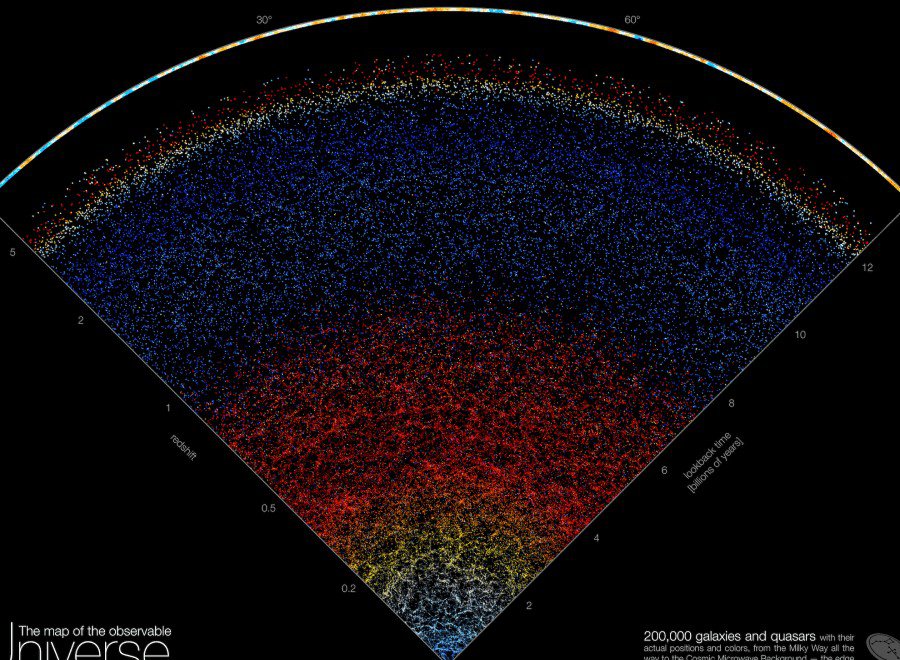Astronomy 10 delves into the study of the universe, encompassing everything that exists, from minuscule particles to colossal star systems.
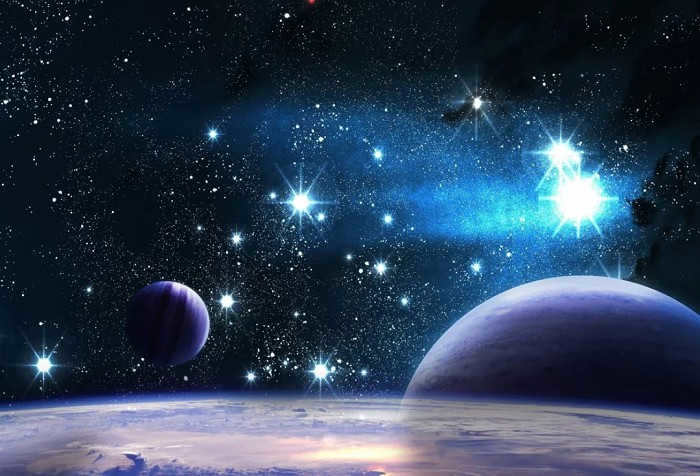
The Universe is composed of outer space, Earth, planets, stars, nebulae, and electromagnetic fields. It is also home to a diverse range of life forms, including plants, animals, and humans. The Universe is a vast expanse of matter and energy, with countless mysteries yet to be discovered.
Which field of study focuses on the study of the cosmos?
Astronomy is the scientific discipline that examines the cosmos, encompassing the positioning, movement, and origin of celestial entities. Researchers specialized in this field are referred to as astronomers, and they investigate various celestial bodies, including the sun, stars, moon, planets within the solar system, meteorites, comets, and numerous other astronomical objects.


By examining the cosmos, astronomers have progressively delved deeper into its enigmatic depths. After comprehending and elucidating the arrangement of the Solar System, scientists directed their attention towards the Milky Way – an immense “community” of stars and interstellar matter, governed by unique “laws”. Exploring and comprehending other stellar systems, both resembling and differing from our own, posed a tremendous challenge. This endeavor involved grappling with distances spanning hundreds of thousands and millions of light years!
What separates space from the Universe?
Space refers to all the expanse in the Universe that lies beyond the atmospheres of celestial bodies. It encompasses everything, including our planet and its inhabitants. However, in order to venture into space, one must overcome Earth’s gravity and ascend beyond the boundary of our atmospheric shell, reaching a height of 100 kilometers.

What is the origin of the Universe?
Based on the current information from modern astronomy, the Universe came into existence approximately 14 billion years ago. Among the numerous hypotheses that attempt to explain its emergence, the Big Bang theory holds the highest level of acceptance. Conversely, there are scientists who argue that the universe is infinite and has always been. However, the exact origins of the universe remain speculative in nature.
The Theory of the Big Bang
The theory of the Big Bang postulates that the contemporary universe was formed following a tremendous release of energy. Numerous researchers, including the renowned Albert Einstein, have made significant contributions to this theory.
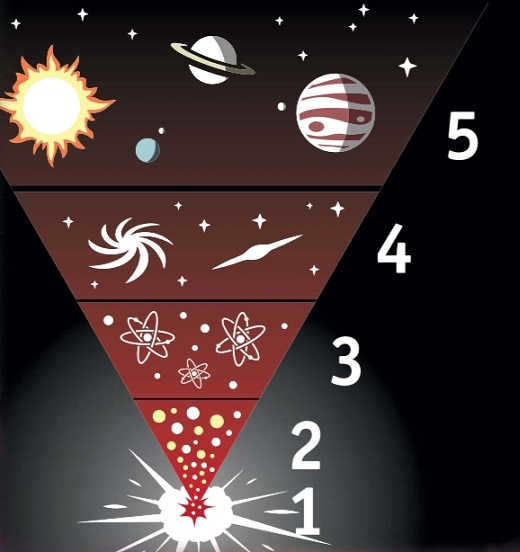
1) Around 15 billion years ago, an event known as the Big Bang took place.
2) Just a few moments following the Big Bang, there was the formation of gas and dust particles.
3) Roughly 400,000 years later, these gas and dust particles merged together to create clouds.
4) After about 300 million years, the formation of stars and galaxies commenced.
5) After approximately 9 billion years, the solar system came into existence, along with our very own planet Earth.
What is the size of the universe?
When it comes to the universe, the answer is clear: it is unimaginably vast! However, scientists approach this question with caution, as they are not able to provide a quick and definitive response.
We are accustomed to the concept that every object possesses a dimension. Sometimes it is not so simple to define, but it is present. An atom, a living cell, a human being, the Earth, any planet, the solar system all possess a dimension. We can consult reference books and locate all of these figures. However, when we consult the reference book for the term “Universe”, we are surprised to find that its dimension is not listed. This is due to the fact that the Universe is an object that does not conform to conventional worldly notions. However, people typically do not contemplate this. Instead, under the influence of science fiction and pseudo-scientific enthusiasts, it is more intriguing to ponder about alternative worlds and extraterrestrial beings. Meanwhile, in recent decades, scientists have witnessed a genuine revolution in comprehending the structure of the universe. This represents a much more significant shift in our understanding of the world around us than the realization that the Earth is a sphere.
Until a few decades ago, it was believed that the Universe had no end. This belief stemmed from the fact that there were no observable boundaries in sight. For instance, contemporary telescopes can now capture images of objects that are 28 billion light-years away, yet no definitive boundaries can be discerned.
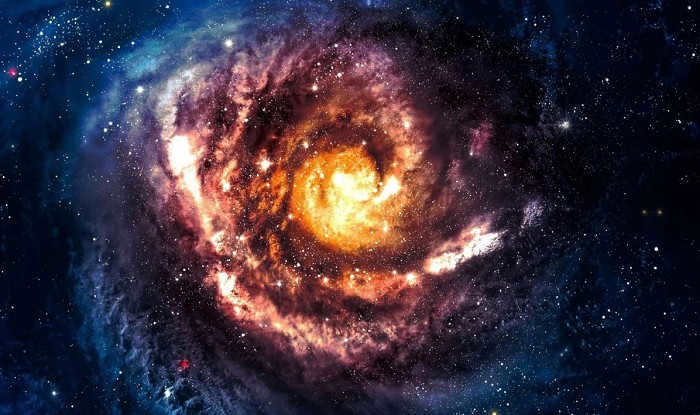
According to scientists, the early Universe was a compact mass of matter that had a high temperature and pressure. This mass started expanding from the event known as the Big Bang and continues to expand to this day.
However, these perspectives had to be revised when the American astronomer Edwin Hubble made a groundbreaking discovery in 1929. He observed that galaxies were moving away from each other at a rate that was proportional to the distance between them. This finding was consistent with the theoretical work of Albert Einstein and Soviet physicist Alexander Friedman, which suggested that the universe was dynamic and changing over time. Hubble’s discovery revolutionized the field of science, replacing the notion of an eternal and unchanging universe with that of an expanding and evolving Universe that had its origins billions of years ago.
Emerging revelations spawned fresh concepts and innovative research. Their findings culminated in a paradigm for the genesis of the cosmos triggered by the momentous event of the Big Bang, believed to have transpired approximately 13 to 17 billion years ago. At that juncture, time sprang into existence and commenced its inexorable march forward. As a consequence of the cataclysmic explosion, particles coalesced, giving rise to matter, which ultimately coagulated to form celestial bodies such as stars and planets.
The current shape of the Universe resembles a soccer ball, with 12 pentagons tightly interlocking. Enclosed within this structure are all known objects, including humanity. Estimates suggest that the diameter of this cosmic “ball” spans anywhere from 60 to 80 billion light-years. (To provide some perspective, a light-year is the distance that light travels in one year, equivalent to approximately 10,000 billion kilometers.) Scientists believe that this expansive process will continue for a period before eventually reversing, resulting in a complete cycle that spans approximately 40 billion light-years.
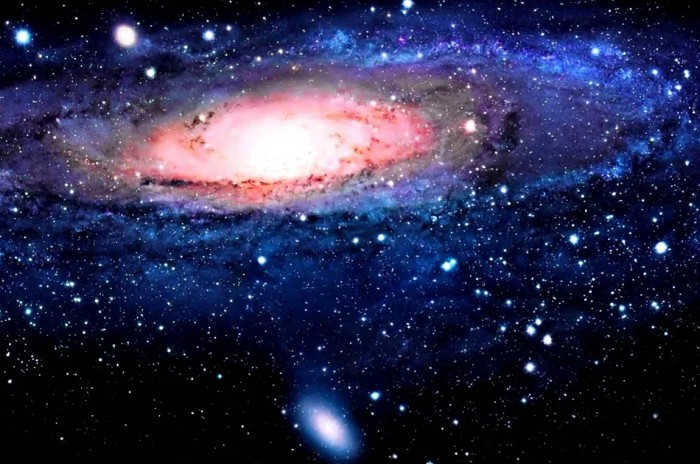
According to scientists, the force of the Big Bang is believed to be driving stars and other celestial objects in the Universe to move away from each other.
There are certain models that describe the origin and evolution of the Universe, suggesting that universes can be formed through high-energy interactions between elementary particles. These models indicate a connection between the macrocosm and the microcosm, implying the possibility of the existence of multiple universes.
Undoubtedly, due to the immense expanses of time and the vast distances involved, this has no impact on our existence whatsoever. However, it profoundly influences our perspectives on the surrounding world. It is truly commendable that individuals on the tranquil planet Earth, throughout their brief lifespans and within the context of cosmic dimensions, delve into such awe-inspiring enigmas of the cosmos with their intellect, zeal, and unwavering determination. This achievement is truly a source of pride.
The known number of galaxies is currently estimated to be at least 100 billion. However, this figure is constantly increasing with the introduction of new and more advanced instruments.
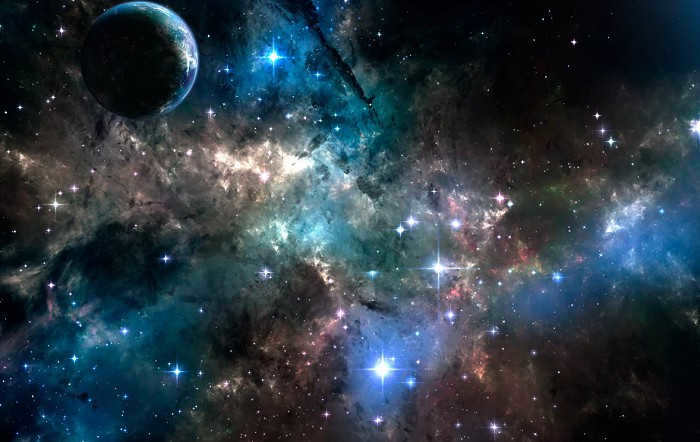
Every single one of these galaxies is home to a range of stars, numbering anywhere from a few hundred thousand to tens of trillions. Within these vast systems, various celestial bodies, including planets, have the ability to orbit. Planetary systems come in all shapes and sizes, with some consisting of just one planet orbiting around a star. However, there are also a multitude of systems that bear a striking resemblance to our very own Solar System.
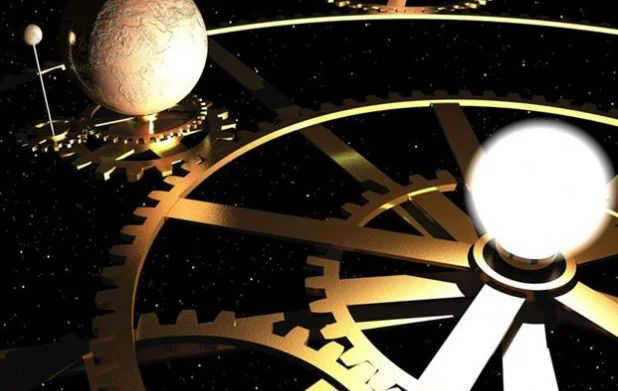
The issue of the arrangement and movement of objects in the cosmos has long captivated human curiosity. Throughout history, esteemed scholars have dedicated themselves to unraveling the mysteries of space, proposing both geocentric and heliocentric models of the solar system, while also delving into the celestial mechanics governing the motion of stars and planets. Over time, some theories have been vindicated through empirical evidence, while others have been refuted. The insights gleaned from the intellectual endeavors of ancient philosophers and astronomers have not only provided humanity with a comprehensive understanding of the universe, but have also paved the way for our conquest of outer space through the development of rockets, spacecraft, and satellites.

In today’s fast-paced world, simply following the traditional school curriculum is no longer sufficient. It has become increasingly important to acquire practical knowledge in finance and investments in order to ensure financial stability.
Start building a solid foundation for your future by expanding your understanding and skills in financial literacy. Access our comprehensive online FINANCIAL LITERACY course today.

Join now and celebrate your achievements.
Conception of the world structure in ancient times
In ancient times, people held their own beliefs about the structure of the world, which had no resemblance to modern theories. The people of that era had limited understanding and everything around them was a puzzle. They relied on their senses and observations of the sky, stars, Sun, Moon, Earth, and natural phenomena. Naturally, they attempted to develop their own explanations for these phenomena. The inhabitants of Earth perceived the Universe as a unified entity divided into two distinct parts: the Earth and the sky.
Astonishing concepts regarding the arrangement of the Earth were conceived by our ancestors. The ancient civilization of India portrayed our planet as a hemisphere resting upon the backs of four majestic elephants. These magnificent creatures took residence on the back of a turtle, gracefully drifting amidst the boundless ocean. Encircling this mesmerizing sight, a serpentine creature symbolized the realm of the skies, establishing a connection between the Earth and the vast expanse of space.

Ancient Egyptians had various beliefs regarding the structure of the universe. One theory suggested that the Earth was a vast elongated valley, with Egypt situated at its very center. The sky was likened to an iron roof, supported by pillars, with stars hanging from it like small lamps. Another depiction showed the Earth god Geba positioned below, while the goddess Nud, the guardian of the sky, was placed above him. Flanking them were two ships representing the Sun god Ra, guiding the Sun’s path across the celestial sphere.

The ancient Slavs had a unique perspective on the shape of the planet, envisioning it as a massive egg. According to their beliefs, the world was divided into three distinct realms. The Earth, where humans and all their surroundings reside, occupied the central position. Below the Earth lay the lower world, known as the bake, while above it stretched the heavens in the form of a domed sky adorned with stars. The ancient Russian people held the belief that the flat Earth was supported by the backs of three whales, which gracefully swam through the vast expanse of the world ocean.

Source
The Babylonians observed the Earth as a convex island encircled by an ocean. The ancient Greeks perceived the Earth as a disk with the ocean encompassing it from all directions. Additionally, they observed the Sun traversing the copper sky.

The ancient Chinese believed that the Earth was a flat triangle, with the sky hanging above it on tall pillars. The ancient ideas about the structure of the world were based on human observations from the Earth’s surface.
In ancient times, knowledge about the Universe was interconnected. Over time, different sciences emerged, such as mathematics, physics, philosophy, and astronomy. As these sciences developed, people’s understanding of the world’s structure evolved. Ancient astronomers, while observing the apparent motion of the planets, couldn’t determine whether the Earth was moving or stationary. This led to two different perspectives on the model of the solar system:
- The Earth does not move and is positioned at the center of the cosmos.
- The Sun is the focal point of the universe, with planets orbiting around it and spinning on their axes.
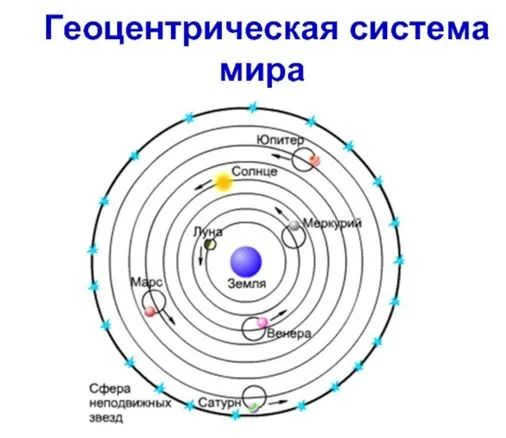
Source
Scientists like Aristotle and Ptolemy played a significant part in the advancement of the geocentric model of the world.
Aristotle was one of the first to demonstrate that indeed the Earth is a sphere. During a lunar eclipse, the Earth projected a round shadow on the moon. As the stars gradually sank below the horizon line, new ones emerged on the opposite side – a clear indication of a convex surface. The philosopher posited that transparent spheres encircled the spherical Earth, with the Moon, Venus, Mercury, Saturn, Mars, Jupiter, and the Sun attached to them. All the stars were fixed on the 8th sphere, while the 9th sphere housed a celestial mechanism that set all the spheres in motion. Aristotle’s cosmological system effectively eliminated gods and mythical creatures from the universe.
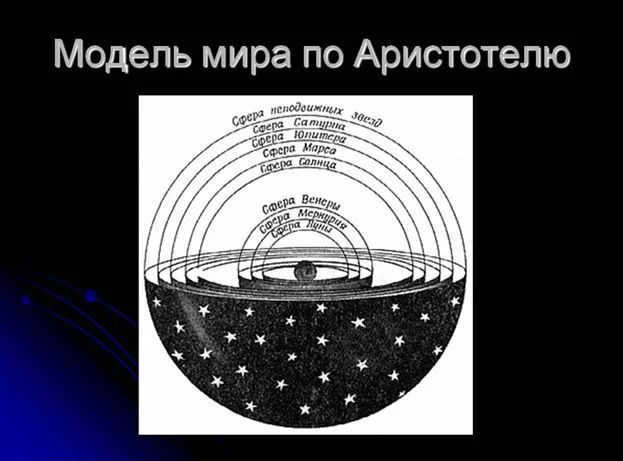
Original Source
Ptolemy maintained the belief that the Earth remained motionless, while all other celestial bodies orbited around it. According to his theories, the Earth was the central point of the entire universe. Ptolemy’s works provided evidence supporting the idea that the planet occupied a central position in the vast expanse of cosmic space, despite its relatively small size compared to other celestial bodies. He explained this size difference by asserting that all stars appear the same size when observed from the Earth’s surface, even though their distances are immensely greater than the size of the Earth itself.
The philosopher contended that if the Earth were in motion, there would be a displacement. However, since it is not moving, it remains stationary. He further observed that in relation to the planet, all objects fall vertically, thus affirming the Earth’s central position. Ptolemy’s contributions to science also introduced the concepts of “top” and “bottom”. “Top” denotes the direction away from the center of the globe, while “bottom” indicates the direction towards the center.
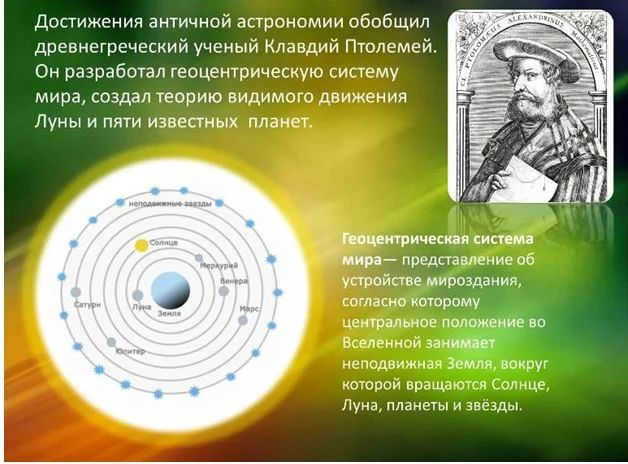
Source
Representation of the world’s structure in the Middle Ages
The Middle Ages witnessed the rise of the church’s dominance over secular and scientific affairs. As a result, the medieval perception of the world continued to align with the geocentric model, influenced by the theories of Aristotle.
During the 12th and 13th centuries, Latin translations of ancient Greek astronomical works began to circulate in Europe. However, the Church, concerned that these works would undermine religious beliefs, actively opposed the dissemination of ancient Greek science. Those found reading books by Greek thinkers were accused of heresy and faced expulsion.
Italy, with its advantageous geographical position, engaged in trade with the Arab nations. Merchants journeyed increasingly further east with each voyage, establishing trade connections with novel states. As a result of their sea travels, there was a growing interest in astronomy: navigators observed the celestial bodies, developed the initial astronomical tools, and crafted nautical charts. Thanks to the influence of the Arabs, Italians became acquainted with the ancient Greek worldview. Furthermore, the extensive sea voyages and observations of the starry sky served as evidence for the Greeks’ hypothesis regarding the spherical nature of the Earth.
Astronomy faced new challenges with the development of navigation. The Arabic tables of celestial motion had to be reviewed and improved, as well as the calendar organization. In 1252, the “Alphonse’s tables” were created based on the latest astronomical observations, presenting a new perspective on the movement of celestial bodies. The tables of Purbach and Regiomontanus were also highly regarded. Thanks to these works, seafarers found it easier to navigate the open ocean, leading to the remarkable discoveries of the 15th century.

Alphonse’s tables
The desire for fresh findings and financial gain by means of commerce results in the swift advancement of navigation. As a consequence, novel techniques for studying the celestial bodies are devised, and traditional hypotheses regarding the composition of the cosmos gradually diminish in significance.
As scientists observed the movement of celestial bodies, they encountered difficulties in calculating their positions in the sky, which raised doubts about the accuracy of Ptolemy’s model of the world. Ancient notions about the structure of the world began to undergo changes. Leonardo da Vinci provided evidence against the existence of Aristotle’s celestial spheres. He believed that the Earth undergoes rotational motion and is not the center of the universe. Nicholas of Cusa also argued that the Earth moves as a globe and that the universe has no specific center, as it is infinite.
The one who first scientifically refuted Ptolemy’s model of the world was Nicolaus Copernicus. He is credited with establishing a completely new world system – the heliocentric model.
Polish astronomer N. Copernicus’s groundbreaking work “On the rotation of the celestial spheres” was published in 1543. In this work, Copernicus introduced the heliocentric theory, which proposed that the Earth and the other planets revolve around the Sun. He provided physical calculations to support his theory, demonstrating that the Earth, like the other planets, orbits around a central point.
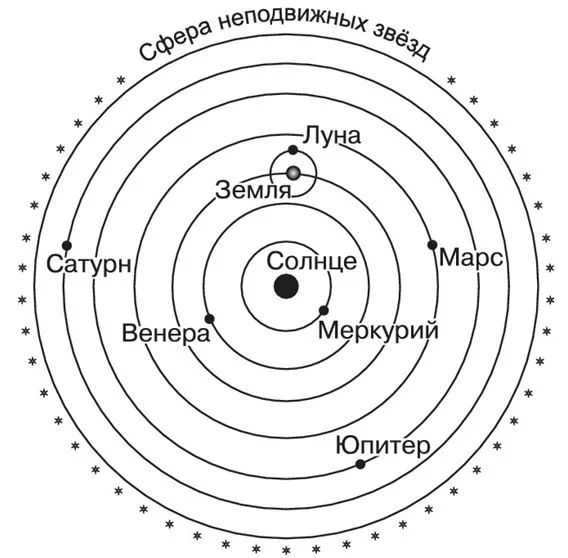
The rotation of the Earth around its axis is the cause for the change of day and night on our planet, as well as the movement of the Sun in the sky.
Copernicus made the following observations and drew the following conclusions:
- The Earth is in motion, periodically getting closer to and farther away from the other planets in our solar system, creating an illusion of their retrograde motion.
- Due to the periodic shift of the Earth’s axis, the vernal equinox arrives slightly earlier each year.
- The sphere of stars is situated at a much greater distance compared to the distances between the planets, which is why we don’t observe annual parallaxes.
The heliocentric model provided a more precise calculation of the planets’ sizes and distances from each other. Copernicus was able to estimate the sizes of the Sun and Moon and also determined that it takes Mercury approximately 88 days to complete a full revolution around the Sun.
Proof of Earth’s Orbit around the Sun
The idea of Earth’s rotation around the Sun was first proposed by the ancient Greek scientist Aristarchus of Samos in the 3rd century B.C., but it was not further developed due to the prevailing geocentric model at that time. Over the years, theories about the universe have evolved, improved, and been proven. Today, it is widely accepted that the Earth does indeed revolve around the Sun.
There are several pieces of evidence that support the Earth’s rotation around the Sun in the modern world:
- Parallactic star shift refers to the phenomenon where the position of a star appears to shift over the course of a year.
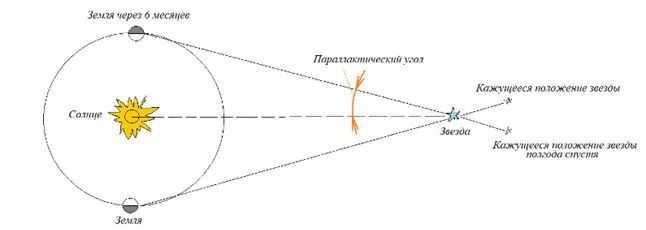
Source
Detecting this phenomenon with the naked eye is extremely challenging due to the vast distances between stars. In the past, a heliometer was used to observe this phenomenon. However, modern methods such as ultra-long-range radio interferometry and space telescopes are now employed to study it.
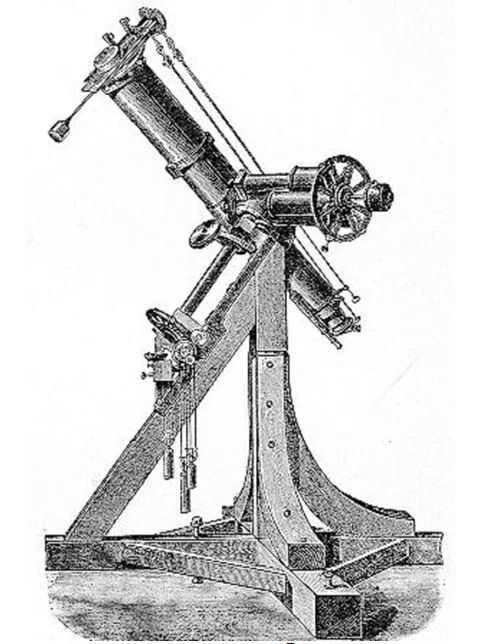
Heliometer
- J. Bradley, an English astronomer, discovered the annual aberration displacement of stars in 1728.

When observing the stars from our planet, we are not stationary, but rather we are in motion along with the Earth’s orbit. As a result, while the light from a star is traveling towards our eyepiece, we and our instrument will have moved slightly in our orbit. This is why the instrument must be pointed in the calculated direction, rather than the apparent direction, in order for the star’s light to reach the lens.
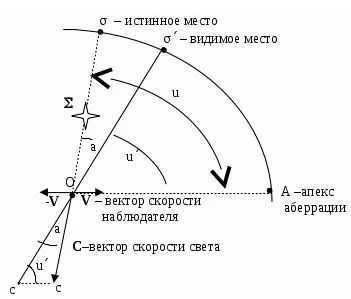
Aberration Source
The celestial equator and the ecliptic form an angle of 23 degrees 27 minutes. The points where they intersect are known as the vernal and autumnal equinoxes. The celestial body passes through these points in the spring, which occurs on either March 20 or 21, and in the fall, which occurs on either September 22 or 23. The time between one vernal equinox and the next is referred to as a tropical year. It is slightly shorter than the sidereal year by 20 minutes and 24 seconds.
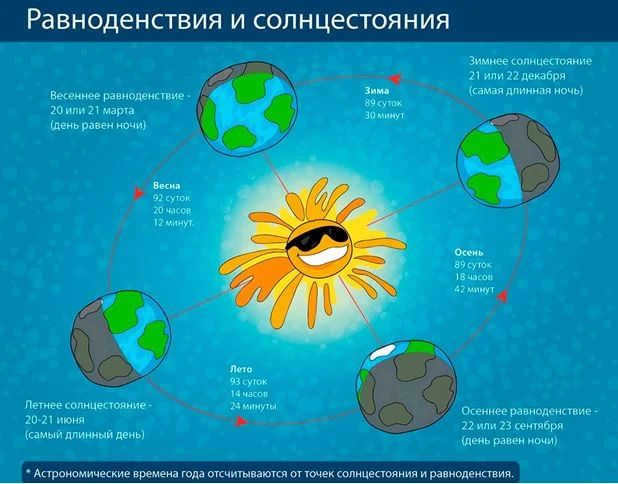
Source
Configuring and observing the planets
The arrangement of the planets refers to their position in relation to the Earth and the Sun. The planets can be classified as inner or outer planets based on their proximity to the Earth.
- Inner planets – these planets have smaller orbits than the Earth and are located closer to the Sun. These planets include Venus and Mercury.
- Outer planets – these planets have larger semi-axes of their orbits compared to the Earth. The outer planets include Mars, Jupiter, Saturn, Uranus, and Neptune.
There are three different arrangements of the inner planets:
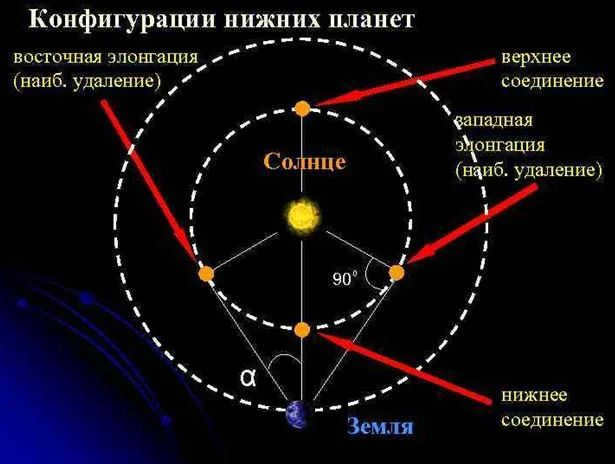
Source
The visibility of the planets is determined by their configuration. As the planets move, they can sometimes appear between the Earth and the Sun, or behind the Sun. In these positions, they become invisible as they are lost in the bright light of the Sun. These positions are known as conjunctions. During a lower conjunction, a planet is as close to the Earth as possible, while during an upper conjunction, it is located behind the Sun and maximally distant from Earth.
Due to its close proximity to the Sun, Mercury is extremely difficult to observe without the aid of optical instruments. On the other hand, Venus, with its greater angular distance from the Sun, is easily visible in the night sky. In fact, it shines brighter than any of the stars. The visibility of these planets from Earth can occur during both sunset and early morning dawn.
When one of the inner planets aligns between the Sun and the Earth, it appears as a small black circle against the backdrop of the celestial luminary. These planetary alignments, known as transits, occur infrequently, happening no more than once every 7-8 years.
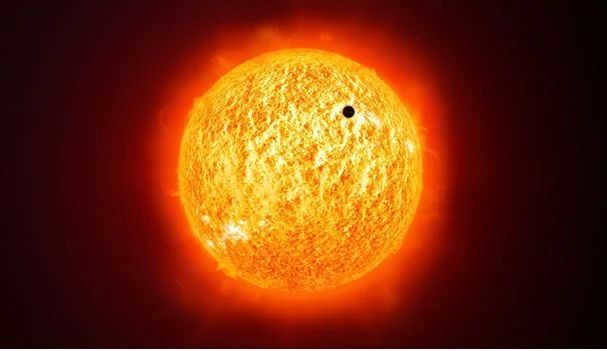
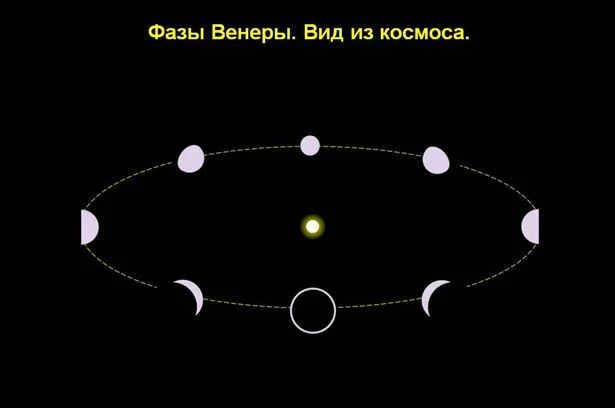
There are various configurations that can be observed in the outer (upper) planets:
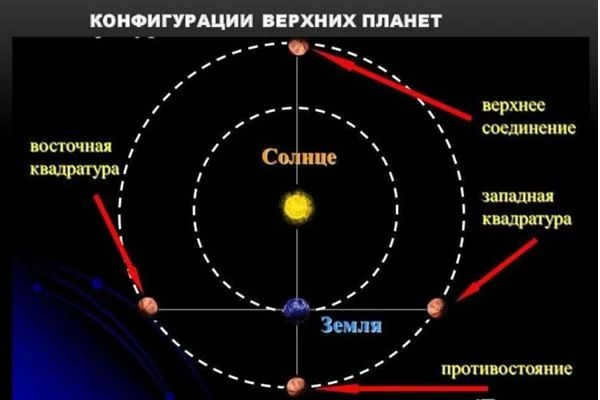
The following article discusses various methods of studying the universe, specifically in the field of astronomy. It explores the different techniques and tools used by scientists to explore and understand the vastness of space. From telescopes to satellites, astronomers have a wide range of instruments at their disposal to observe and analyze celestial objects and phenomena. By studying the universe, astronomers gain insights into its origins, composition, and evolution. The knowledge gained from these studies helps expand our understanding of the cosmos and our place within it.
Depending on how they are positioned, the visibility conditions of the planets also change. Conjunction occurs when the upper planet, the Sun, and the Earth align in a straight line, with the Sun in the middle. During this time, the planet is hidden in the Sun’s rays and cannot be observed. The configuration of the planets, when the Earth is situated between the Sun and the upper (outer) planet, is known as the opposition. This is the most favorable alignment for observation. At this point, the outer planet is closest to the Earth and is fully illuminated. The Earth’s shadow does not cast onto the outer planet because each celestial body orbits in its own plane, which do not coincide. As a result, the planets will appear slightly higher or lower in relation to the Earth during the opposition.
Planetary Orbits and their Time Periods
It is a well-known fact that all planets revolve around stars in elliptical orbits. Moreover, stars themselves are not stationary; they also move either around the center of the Galaxy or around other stars. In simple terms, all large celestial objects follow specific paths of motion.
When astronomers analyze a particular celestial body, they inevitably take into consideration the time it takes for it to complete a full revolution along its trajectory. This is referred to as the orbital period. In the study of the solar system, scientists make use of the concepts of synodic and sidereal periods.

The celestial bodies in our solar system, such as planets, have different periods of revolution around the Sun. This is known as the sidereal period. For instance, Earth takes 365.2564 days to complete one orbit, which is equivalent to a year. Jupiter’s sidereal period is 11.86 years, Uranus takes 84.02 years, and Neptune takes 164.78 years.
The distance from the Sun affects the speed of the planets. The closer a planet is to the Sun, the faster it moves. Consequently, planets closer to the Sun have shorter sidereal periods compared to those that are farther away.
Scientists use observation in astronomy to determine the synodic period – which is the amount of time between two identical planetary configurations, such as two oppositions or two conjunctions. To calculate a planet’s sidereal period, one must first know its synodic period.

So, what is the practical relationship between the synodic and sideric periods? Let’s say the upper planet has a stellar period denoted as P, and the Earth has a period denoted as T. Since the Earth is closer to the Sun, we have P˃T. The synodic period is denoted as S. The angular velocities of the planets’ orbits are 360 0 /T and 360 0 /P. For instance, in the time it takes for the planet to complete one orbit, the Earth will have traveled an arc – , which is 360 0 greater than and equal to the arc traveled by the planet. This leads us to the following formula:

For instance, what is the duration of Mars’ synodic period if its sideric period (P) amounts to 1.88 Earth years? Earth’s synodic period (T) equals 1 year.
Mars is considered to be an outer planet, so let’s apply the following formula:

A chart displaying the synodic and sideric periods of the planets in our solar system. It is important to note that these periods are constant and have been accurately calculated by scientists.
Cosmic Speeds
Have you ever wondered why objects we throw up always end up falling down? And yet, artificial satellites launched from Earth can stay in outer space for years without any issues. This is all thanks to the power of centrifugal force, which helps keep these bodies in place. Let’s conduct a small experiment to better understand this phenomenon. We’ll take any object and attach it to a string, then start spinning it in a circular motion. The faster we spin it, the less likely the object is to fall. However, if we start spinning it slowly, the string will loosen and the object will easily drop to the ground. So what’s the significance of all this?
In the field of astronomical science, there exists a concept called cosmic velocity. In simpler terms, this refers to the speed required for an object to overcome the gravitational force exerted by celestial bodies and their systems. If we delve into scientific literature, we’ll come across the following definition of this concept:

To put it differently, the velocity of space refers to the speed that a spacecraft, for instance, would need to have prior to its initial movement, while still on the Earth’s surface, before entering the atmosphere.
In the field of astronomy, there are four distinct space velocities:
- The first velocity, v1, is the speed at which an object gains the ability to orbit at a low altitude around a celestial body without falling to its surface. This is typically used for Earth’s artificial satellites and has a value of 7.91 km/s;
- The second velocity, v2, is the speed at which an object overcomes the gravitational force of a celestial body and starts moving in a parabolic orbit, gradually moving further away from it. Its value is 11.168 km/s;
- The fourth v4 – with its assistance, the object has the capability to exit the Galactic space. The exact worth of it is unknown as the distribution of matter in the Galaxy is still a mystery. The approximate speed value should range from 470-520 km/s.
Yuri Gagarin’s Orbital Journey around the Earth
April 12, 1961 was a truly momentous day, not just for the Soviet Union but for the entire world. It marked the historic moment when the first ever cosmonaut ventured into space. This brave pioneer was Yuri Gagarin. Although Gagarin’s flight lasted a mere 108 minutes, it represented a groundbreaking achievement for humanity as a whole, as we finally reached beyond the confines of our planet. The Soviet Union proudly took the lead in this momentous occasion, with a Soviet man becoming the first to overcome the pull of Earth’s gravity and enter a near-Earth orbit. On board the “Vostok” spacecraft, launched from the Baikonur Cosmodrome, Yuri Alexeyevich Gagarin completed one full revolution around the globe before successfully landing in the Saratov region at 10:55 AM.
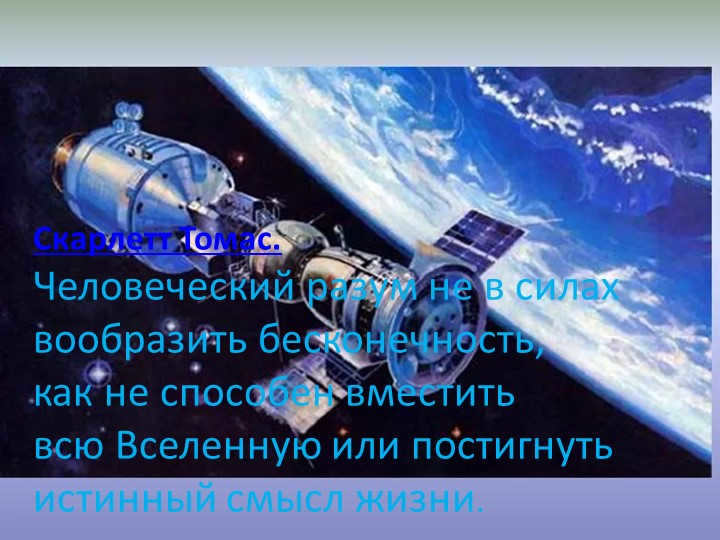
Currently, 58,741 educational institutions are being offered additional cumulative discounts ranging from 2% to 25%. To determine the discount available to all employees of your educational institution, please log in to your personal Infoworks account.


Professional Development Course
Teaching Spanish Methods
We have the ability to incorporate the discount offered by your school with our existing discount, which will vary based on the number of your colleagues who have already taken an Infoworks course.
Currently, there are 58,741 educational institutions eligible for additional cumulative discounts ranging from 2% to 25%. To determine the discount applicable to all employees of your school, please log in to your personal Infoworks account.


Course for Professional Development
German Language: Teaching Theory and Methodology in Vocational Education
We can apply a discount for your educational institution in addition to this discount (the amount will depend on how many of your colleagues have completed Infowork courses).
Currently, 58,741 educational institutions are eligible for additional discounts (ranging from 2% to 25%). To determine the discount available for all employees of your educational institution, please log in to your personal Infoworks account.


Getting ready for the literature USE. The incredible realm of F.I. Tyutchev’s poetry
Description of the presentation on separate slides:

Scarlett Thomas presents a thought-provoking argument about the limitations of the human mind. According to her, the human mind lacks the capability to fathom the concept of infinity, similar to its inability to grasp the vastness of the universe or comprehend the profound meaning of life.

Slide 2 of the Scientific and Practical Conference “Step into the Future”
Section “ASTRONOMY” Research project
on the topic:
“RESEARCH METHODS FOR THE UNIVERSE”.
The project was conducted by:
Gadzhimurad Ilyasovich Ibragimgadzhiev
9th grade student of Class “A” at MCOU “School No. 2” in Yuzhno-Sukhokumsk city.
Supervisor:
Abduragimova Sujana Gabibovna
Physics and astronomy teacher at MCOE “SOSH No.2”.

There have been three slides on the topic of “The Shortest History of Time” by Stephen Hawking and Leonard Mlodinov.
Thanks to the advancements in technology and the introduction of exceptional space telescopes, we have been able to uncover astonishing information about the universe time after time. And the exciting news is that we now have the understanding that the universe will continue to expand at an accelerating rate in the coming years, and time itself will endure indefinitely, as long as we are careful not to be consumed by a black hole.

For centuries, humans have been observing the stars, relying on their celestial light to navigate and determine their position. This knowledge was especially crucial for travelers and sailors. Early astronomy not only helped in tracking time and seasons but also provided a tangible understanding of the cosmos. However, with advancements in technology, humans have gained the ability to explore not just what is visible to the naked eye but also the vast expanses beyond our solar system. The significance of studying the universe’s structure and any practical benefits it may offer are explored in our featured article.
The initial sightings of celestial bodies
According to Vitaly Gorbatsky, a Soviet and Russian astronomer, the exploration of the natural world (in its rudimentary form) commenced with the establishment of the earliest human settlements during the Paleolithic era, or the early Stone Age. Regrettably, there is no definitive proof that individuals were capable of determining the north-south axis and navigating based on the stars and planets. Nonetheless, the existing archaeological evidence provides grounds for such a conjecture.
Astronomy arose as a result of practical needs, such as agriculture, and spiritual needs, such as religion. Since the majority of the population in Ancient Egypt was engaged in agriculture, the Sun held great importance for them. In fact, the sun god Ra was considered the most senior and powerful deity in their myths. The rising of the star Sirius coincided with the flooding of the Nile, which was also significant to the Egyptians. It was in Ancient Egypt that the solar calendar, which served as the basis for the Julian calendar, was developed. This calendar consisted of 12 months, each with 30 days, and an additional 5 days. Additionally, the day was divided into 24 hours.
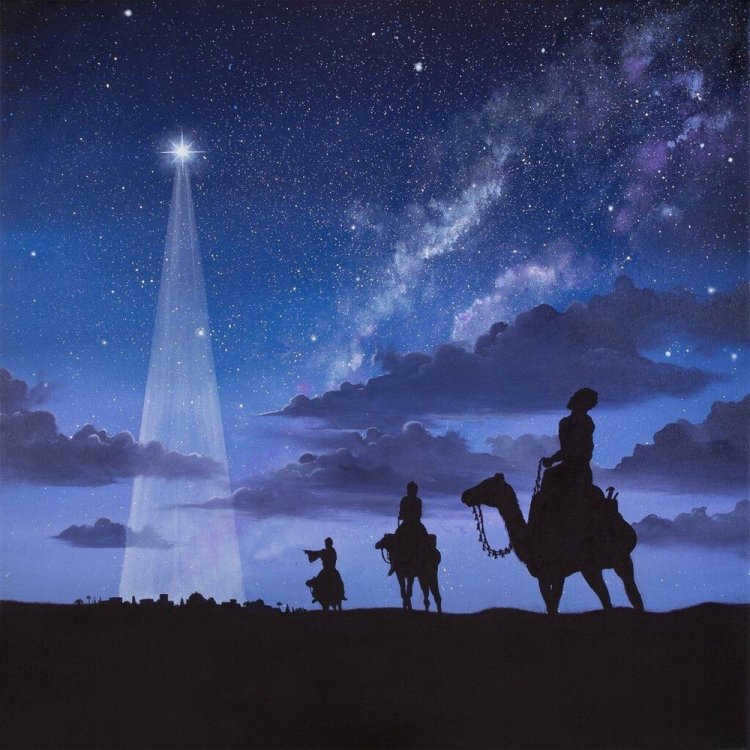
Based on the existing texts from ancient Babylon, priests who created horoscopes and took into account the movements of various planets were highly revered. Although this knowledge is often associated with astrology, which is now considered a pseudoscience, these observations predated the development of the field of astronomy. The Sumerians, who lived in Southern Mesopotamia (present-day Iraq), like other farming communities, followed a lunar calendar and would add a thirteenth month when necessary due to the solar year being longer than the lunar year. They also assigned names to certain constellations, such as referring to the scorpion constellation as “Sting and Claw”.
Ancient Greek philosophers were the first to determine that the Earth is spherical and even calculated its approximate radius. However, this knowledge was lost during the Middle Ages due to the decline of scientific and astronomical understanding after the fall of the Roman Empire. It wasn’t until the Modern Age that astronomers made significant advancements in their field.
In the 16th century, European navigators and travelers had the opportunity to observe the southern hemisphere’s sky and its constellations in their entirety for the first time. Then, in 1676, the English astronomer Edmond Halley created the first catalog of stars in the southern sky using a telescope from St. Helena in the South Atlantic.
It was during the New Age that both socio-economic and scientific progress disproved the notion that the Earth is the center of the universe. This period also revealed the vastness of the universe itself.
In our modern era, the exploration of the cosmos is conducted through the most precise and comprehensive investigations. This remarkable achievement has been made possible due to yet another scientific and technological breakthrough.
Nowadays, cutting-edge observatories, advanced computing systems, and various other sophisticated technologies are utilized to examine stars and other remote entities. These advancements enable us to scrutinize the Universe, comprehending its history, current state, and forthcoming developments with meticulousness.
Current understanding of the field of astronomy
In the present day, the field of astronomy can be divided into several distinct sections, each of which is interconnected in some way. These sections encompass a comprehensive study of celestial objects, including their evolution, position, motion, and various unique characteristics. As a natural science, the progress in astronomy relies heavily on knowledge from other scientific disciplines, while also influencing them in return. This symbiotic relationship between sciences creates a complex and interconnected system. To gain the most comprehensive understanding of the Universe, specific research methods have been developed. For instance, the methods used in cosmochemistry, which focus on studying the chemical composition of cosmic bodies and the processes involved in the formation of cosmic matter, differ from those employed in celestial mechanics and theoretical astrophysics.
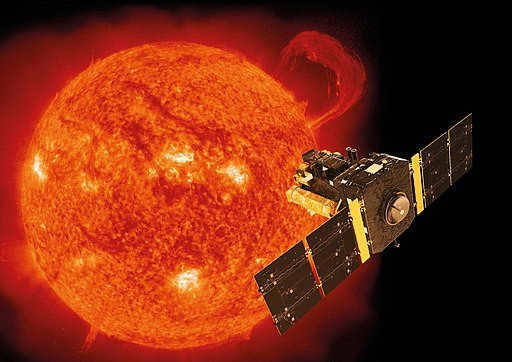
Vitaly Gorbatsky, who we mentioned previously, highlights several significant progressions in the field of astronomy during the latter part of the 20th century in his textbook, Lectures on the History of Astronomy. A considerable portion of these advancements are linked to the acquisition of data through the deployment of spacecraft. For instance, observations made by the SOHO satellite demonstrated that the emissions from the Sun were of such a vast magnitude that they enveloped extensive regions as they permeated the corona. Furthermore, observations conducted by the Beppo-SAX satellite, utilizing the afterglow of flares in the X-ray and optical spectrums, have confirmed their connection with distant galaxies.
As previously mentioned, the field of astronomy is vast and encompasses many different areas of study. Thanks to advancements in technology, researchers are able to gather extensive amounts of information in each of these areas. Trying to cover all of this research in a single lecture would be challenging. For instance, the Russian observatory, “Spektr-RG,” recently reached a significant milestone, having studied the Universe for over a thousand days. Last year, they published a catalog of hard X-ray sources based on the first year of data collected by the ART-XC telescope. In just one year, this observatory has collected as much information as other observatories that have been studying the same range for decades, according to Professor Alexander Lutovinov from the Russian Academy of Sciences. Each day, Russian scientists using this observatory record dozens of objects emitting hard X-ray radiation within our galaxy, such as black holes, neutron stars, white dwarfs, and remnants of supernova explosions. The results of their work have propelled Russian space research to the forefront of the global scientific community.
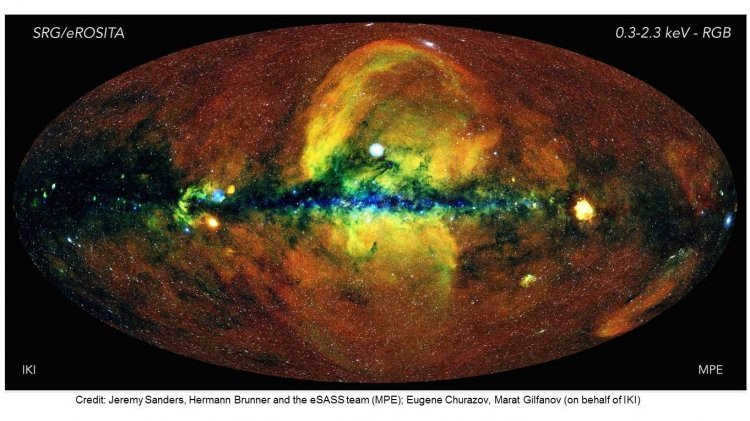
Exploring the Universe: A Collaboration of Multiple Disciplines
The ability to send aircraft into space and conduct successful missions involving living organisms, including humans, is made possible through the collaborative efforts of physicists, mathematicians, designers, project engineers, material scientists, physicians, biologists, and experts in various other fields.
During one of his interviews, Evgeny Kablov, an academician of the Russian Academy of Sciences and the general director of VIAM, revealed that approximately 95% of the materials used in the production of Soviet aviation, rocket, and space equipment were sourced from the All-Russian Research Institute of Aviation Materials (VIAM). It is unlikely that passengers on airplanes consider the fact that they are traveling on a machine equipped with a gas turbine engine, which operates at temperatures several hundred degrees above the melting point. Furthermore, the space industry requires even more powerful engines and, consequently, materials that can withstand higher temperatures.
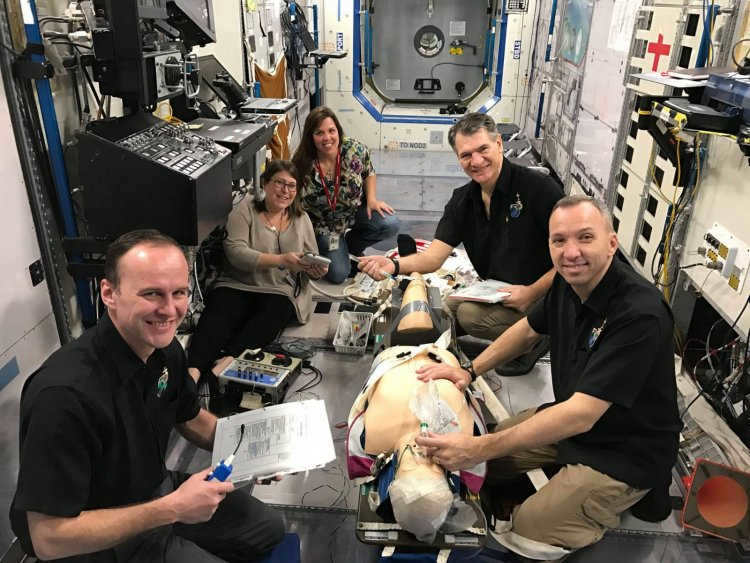
Space exploration has given rise to a crucial field known as space psychology. Experts in this field focus on researching various psychological phenomena that are associated with human presence in space. These include changes in the way humans perceive their body scheme, their perception of time, their sleep patterns, and their ability to adapt to life in conditions of increased danger and isolation within small groups. Psychologists are responsible for selecting and preparing candidates for space travel, ensuring that the crew is formed based on their psychological characteristics, establishing a structured work and rest schedule, and providing ongoing psychological support throughout the entire space flight. Their goal is to assist astronauts in successfully completing the tasks they are assigned.
There exist numerous diminutive and unidentified star groupings in the mountainous regions,
Unseen by our feeble and hazy vision,
It is not within our capacity to assess their radiance,
Except through the extraordinary capabilities of the telescope
The advancement of astronomy holds significant importance not only for the entirety of scientific research, but also for our daily lives. Numerous devices that we utilize on a regular basis have been developed as a result of space exploration. One of the most evident applications is in the realm of navigation and communication. Thanks to satellites, we now have precise GPS navigation, internet access, and satellite television. Moreover, the utilization of energy-efficient solar panels has extended beyond just proximity to the Sun and has found its way into practical use on Earth. Additionally, we have benefited from the development of digital camera sensors, airport security scanners, portable X-ray machines, magnetic resonance imaging (MRI) scanners, and various other technologies that have been derived as a “secondary benefit” from space exploration.
The infrared thermometer, which gained immense popularity during the Covid-19 pandemic, was originally designed for space exploration purposes, specifically to measure the temperature of stars and planets. The fire-resistant fabric initially developed for astronaut spacesuits has proven to be incredibly useful in creating protective clothing for firefighters and military personnel. Additionally, the innovation in astronaut outfits has found its way into the realm of athletic wear. Furthermore, space technology has been harnessed to produce cutting-edge swimsuits that minimize drag, repel water, and are virtually weightless, as well as thermal underwear that effectively retains heat and wicks away moisture. The prolonged absences of astronauts from easily accessible food sources necessitated the development of a new method of preparation that maximized nutritional value. This gave rise to the invention of freeze-dried food, a remarkable technology that retains 98% of the original nutritional value while reducing the weight of the product by a staggering 80%. Nowadays, a wide range of dishes are freeze-dried, catering to the needs of athletes and even featuring beloved classics like borscht, which holds a special place in the hearts of many individuals from the post-Soviet region.
It is important to bear in mind that the exploration of space also serves the purpose of safeguarding the well-being and vitality of individuals on Earth. One can anticipate the arrival of an asteroid and have ample time to respond accordingly. Additionally, astronomers possess the ability to alert us to imminent solar storms and forecast the occurrence of significant outbursts of electromagnetic radiation in the Sun’s atmosphere, known as solar flares. Furthermore, space medicine contributes to our everyday understanding of how to mitigate various ailments, such as osteoporosis, as astronauts experience significant loss of bone density during space travel.
The quietness (and visual) of stillness. Footage captured by the Borey team (Sergey Ryazansky, Paolo Nespoli, Randolph Breznick) aboard the Soyuz MS-05 spacecraft. Video source: NASA Johnson Space Center’s Youtube channel. L. Johnson Space Center
- Gorbatsky, V.G. Textbook on the history of astronomy. – St. Petersburg. – Izd. S.-Peterb. un-ta, 2002, – 198 p.
- Institute of Medical and Biological Problems: 50 Years of Service to Science and Humanity in Space and on Earth / Edited by A.I. Grigoriev, I.B. Ushakov. – M.-Voronezh: Publishing and Printing Center “Scientific Book”, 2013. – 488 p.
- Everyday objects that owe their existence to space flights. Nauka TV
- Poems about the cosmos. Culture.RF.
- The objectives of astronomy. A guide from Author24
- 10 fascinating space phenomena that have influenced our daily lives. TC “Zvezda”
- What impact can astronomy have on improving life on Earth? www.cfa.harvard.edu
- Exploring the origins and evolution of Earth, and the quest for habitable planets. hea-www.harvard.edu
- Stunning illustrations in the gallery captured by Oleg Artemyev. Source: Roscosmos
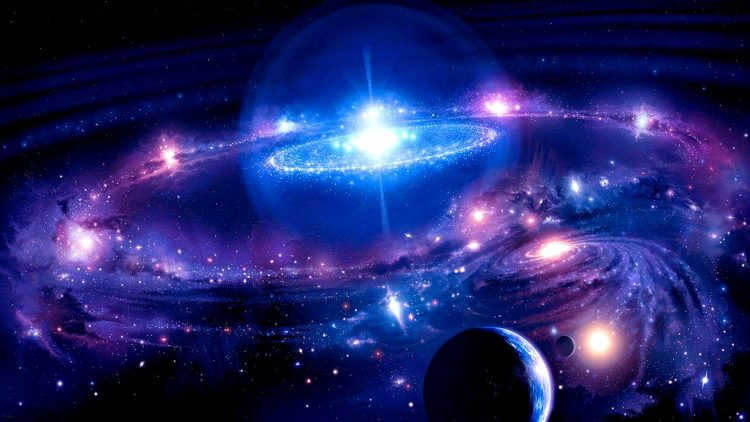
- Galaxies
The Universe is an immense expanse of dark matter, consisting of trillions of galaxies and star clusters. It has no limitations in either space or time. The vast expanse of space contains numerous enigmas, which can be unraveled by understanding the evolutionary principles and structure of the Universe.
The Universe is composed of all observed galaxies of various types and their clusters, along with the intergalactic medium.
Evolution of the Universe
The Universe’s most significant characteristic is its unceasing expansion. The concept of the Universe’s expansion was initially proposed by Albert Einstein but lacked precise calculations.
In 1920, Alexander Alexandrovich Friedman, a Russian scientist, thoroughly examined the ten most intricate equations of the theory of relativity and reached a crucial conclusion: there can never be just one solution under any circumstances. Consequently, it became impossible to accurately determine the shape, curvature radius, and overall stability of the Universe.
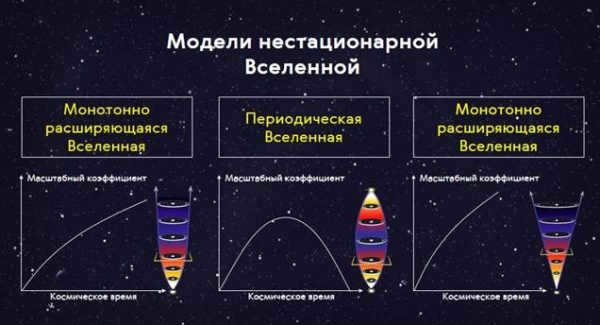
However, Friedman managed to derive three potential models of a non-stationary Universe: two of them depicted a continuously expanding Universe. The third model proposed a cyclical Universe, meaning that the curvature radius of its space initially grows from zero to a certain value and then diminishes back to zero.
All of this indicates that the Universe cannot remain in a stationary state; instead, it must undergo expansion and contraction due to the gravitational forces at play.
But what is the cause of the universe’s expansion?
The initial idea behind the universe’s expansion was first presented by a Belgian priest, Georges Lemaître, and the Soviet-American physicist Georgy Antonovich Gamow. According to their theory, the universe came into existence approximately 14 billion years ago during the Big Bang and has been continuously expanding and cooling ever since.
Prior to the Big Bang, there was a complete absence of matter, space, and time. The four fundamental forces of nature combined into a single entity. The universe itself existed as a substance with an extremely small volume and incredibly high density.
This particular state of matter is known as a singularity.
The process of the Universe’s formation
The Big Bang theory has provided scientists with a precise framework for understanding the evolution of the Universe. Currently, we have a comprehensive understanding of the various stages that occurred during the early phases of the Universe’s development. However, it is important to note that the initial stage of creation continues to be a source of intense debate and disagreement among experts.
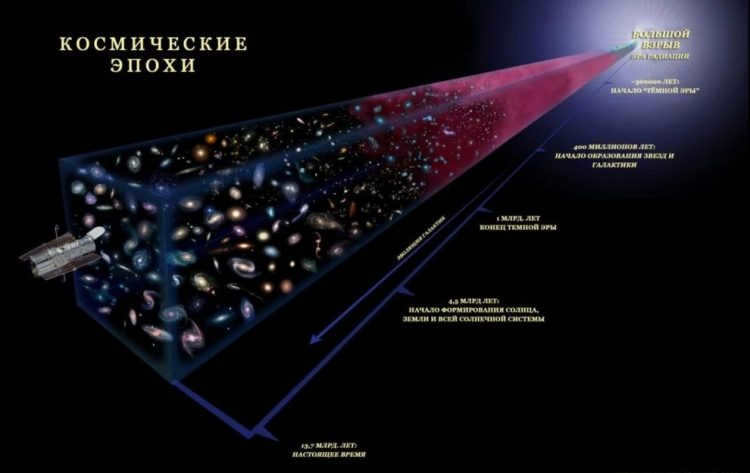
At present, the field of science differentiates the subsequent stages that occurred after the occurrence of the Big Bang:
- The earliest period we are aware of is referred to as the Planck era, which encompasses a time span of 0 to 10-43 seconds. During this time, all matter and energy in the universe were concentrated at a single point, and the four fundamental forces were unified;
- The Age of Grand Unification (10-43 to 10-36 seconds). This period is characterized by the emergence of quarks and the separation of the primary types of interactions. The isolation of the gravitational force is considered to be the major event of this era. During this era, the laws governing the universe began to take shape. Currently, we have the ability to provide an in-depth description of the physical processes that took place during this era;
- During the time span of 10-32 to 10-12 seconds, unique particles such as the Higgs boson come into existence, and the surrounding space is filled with quark-gluon plasma. The phase occurring from 10-12 to 10-6 seconds is referred to as the quark epoch. Following this, from 10-6 to 1 second, hadrons dominate the scene. After 1 second since the occurrence of the Big Bang, the lepton era commences.
- The nucleosynthesis phase takes place until approximately the third minute from the commencement of these events. During this phase, helium, deuterium, and hydrogen atoms emerge from particles within the Universe. The process of cooling continues, resulting in the space becoming transparent to photons.
- After the Big Bang, the era of Primary Recombination began three minutes later. During this period, astronomers are still studying relic radiation;
- The period from 380,000 to 550 million years is known as the Dark Ages. During this time, the Universe was filled with hydrogen, helium, and various types of radiation. There were no light sources in the universe;
- 550 million years after Creation, stars, galaxies, and other wonders of the Universe appeared. The first stars exploded, releasing matter to form planetary systems. This period is known as the Age of Reionization;
- 800 million years ago, the first planetary star systems began to form in the Universe. It was the Age of Matter, when the Universe started resembling what we observe today. It was also during this time that our home planet was formed.
Criticisms of the Big Bang Theory
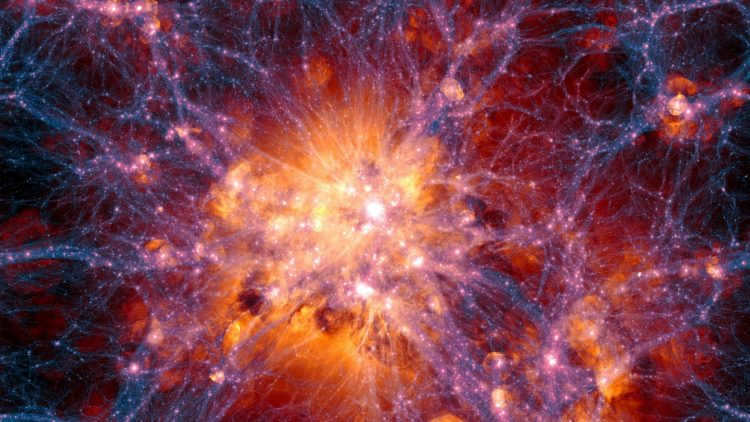
Several scientists have raised concerns about the validity of the Big Bang theory. According to this theory, the universe originated from a single point, but if that were the case, we would expect to see an uneven distribution of matter, which is not observed. Additionally, the Big Bang theory fails to explain the disappearance of antimatter, which should have been present in equal amounts as ordinary matter during the “moment of creation.” However, the current abundance of antiparticles in the Universe is extremely small. Perhaps the most significant flaw in this theory is its inability to provide an explanation for the Big Bang phenomenon itself; it is simply accepted as a given fact. We have no knowledge of what the universe looked like before the singularity.
There are alternative theories regarding the beginning and subsequent development of the universe. For a long time, the concept of a static universe was widely accepted. This idea was supported by several scientists, including the renowned Stephen Hawking. They believed that the universe originated from quantum fluctuations within the vacuum.
Another hypothesis, proposed by Lee Smolin, suggests that our universe, along with other universes, actually formed within black holes.
The arrangement of the Cosmos
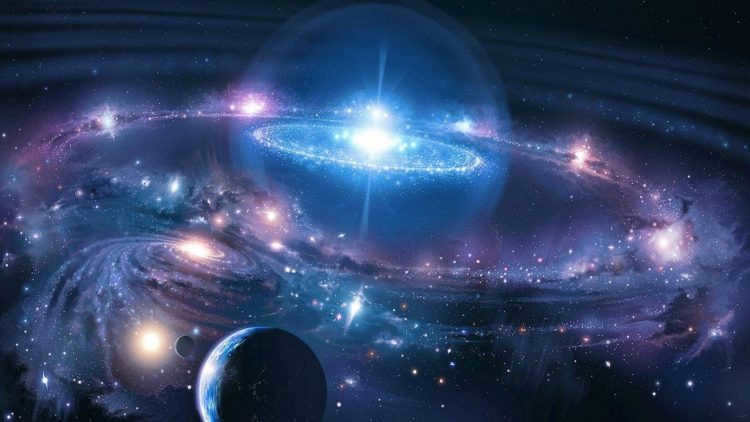
Throughout history, humans have always had a preference for perceiving the universe as timeless and unalterable. This perspective persisted until the 1920s in our current era. During that period, it was believed that the universe was confined to the boundaries of our own galaxy. While paths of existence may come into being and cease to exist, the galaxy itself remains unaltered, much like a forest in which successive generations of trees undergo change.
The concept of the Universe’s structure has been developed over the course of astronomical history. However, it is only in recent times that the field of cosmology, which focuses on the structure and evolution of the Universe, has emerged.
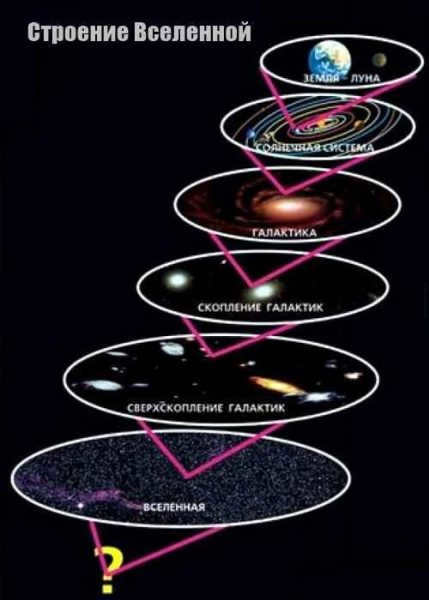
The organization of the Universe is intricate and encompasses various levels, which can be categorized based on the size of celestial objects:
- Within the Universe, celestial bodies are typically organized into systems. Stars often exist in pairs or are part of clusters that consist of dozens or even hundreds of stars. In this aspect, our Sun is unique as it does not have a “double”.
- The subsequent phase of organization is represented by galaxies, which can manifest as spiral, elliptical, lenticular, or irregular forms. The variation in galaxy shapes still remains a topic of incomplete comprehension among scientists. Within this realm, we encounter extraordinary celestial phenomena such as black holes, dark matter, interstellar gas, and double stars. Besides stars, galaxies also encompass elements such as dust, gas, and electromagnetic radiation. It is worth noting that the known universe has revealed the existence of several hundred billion galaxies.
- A handful of galaxies make up The Local Group. In addition to the Milky Way, our group includes the Triangle Nebula, the Andromeda Nebula, and 31 other systems. Galaxy clusters are the largest known structures that are stable in the Universe, and they are held together by the force of gravity and some other unidentified factor. Scientists have determined that gravity alone is clearly insufficient to maintain the stability of these objects. There is currently no scientific explanation for this phenomenon;
- The next level of the Universe’s structure consists of superclusters of galaxies, each of which contains dozens or even hundreds of galaxies and clusters. However, gravity no longer keeps them bound together, so they follow the expansion of the Universe;
Each Universal object has a distinct configuration with an enigmatic composition.
Currently, we possess a more comprehensive comprehension of the arrangement of the Universe, however, each additional piece of knowledge simply generates further inquiries. The analysis of subatomic particles within a particle accelerator, the observation of wildlife in its natural habitat, and the successful landing of an interplanetary probe on an asteroid can also be regarded as the exploration of the Universe, as these entities are integral components of it. Furthermore, humans themselves are an integral part of our magnificent celestial Universe. Through the investigation of the solar system or remote galaxies, we are able to gain a deeper understanding of our own existence.
The Dimensions of the Universe
When discussing the dimensions of the Universe, we are specifically referring to the observable portion of the Universe, also known as the Metagalaxy. As we continue to gather data through observations, the boundaries of the Universe expand further and further. This expansion occurs uniformly in all directions, providing evidence for its spherical form.
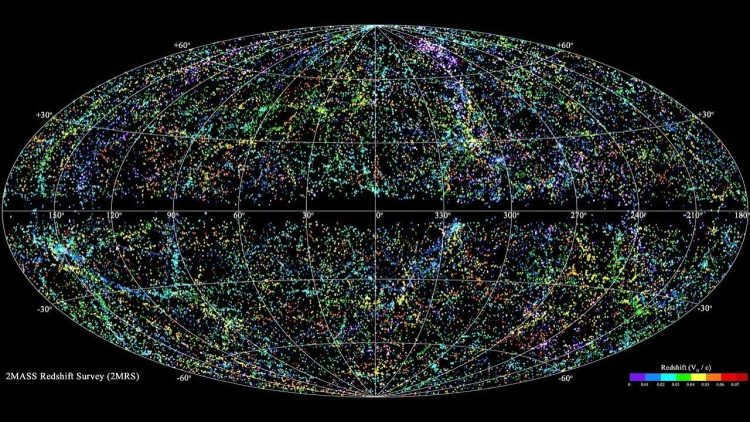
The Universe’s cosmic map
Our universe came into existence approximately 13.8 billion years ago due to the occurrence of the Big Bang – an event that led to the creation of stars, planets, galaxies, and other celestial bodies. This measurement represents the true age of the Universe.
By considering the speed of light, we can estimate that the Universe spans about 13.8 billion light-years. However, in reality, it is even larger because it has been continuously expanding since its inception. A portion of the Universe is expanding at a superluminal rate, resulting in a significant number of objects that will forever remain beyond our sight. This boundary is known as Hubble’s sphere or horizon.
The Metagalaxy has a diameter of 93 billion light years. The contents of the unknown Universe remain mysterious. It is possible that there are even more remote entities that cannot be observed by astronomers currently. A considerable number of scientists hold the belief in the boundlessness of the universe.
The age of the Universe has been extensively examined utilizing a variety of methods and scientific devices. The most recent confirmation was provided by the Planck orbiting telescope. The data currently available aligns perfectly with contemporary models of the universe’s expansion.
The origin of our universe can be traced back to a tiny dot. Through rapid evolution and expansion, this dot transformed into vast expanses of space. However, is it possible for this expansion to come to a halt? Can the universe reverse its course and compress back into its original dense point?

Predictions for the future of the Universe
In the 1990s, scientists reached a consensus that two potential scenarios for the future of the Universe are plausible.
One possibility is the “compression” of the cosmic expanse. It could eventually reach its maximum size and collapse. This collapse could be triggered by the increasing density of dark matter, which would cause it to shrink.
Another hypothesis suggests that black holes might be the catalyst for the Universe’s demise. All star clusters could eventually exhaust their energy and transform into black holes. If the temperature of space nears absolute zero, these black holes could potentially evaporate. This would ultimately lead to a collapse and a logical conclusion.
Unbelievable details about the cosmos
10. Ranging from minus 270 degrees Celsius to a whopping 50 million degrees Celsius.
In space, mind-blowing circumstances exist without exception. The heat within a supernova can skyrocket to over 50 million degrees Celsius, an astounding five times hotter than a nuclear blast. Conversely, the temperature in the vastness of outer space plummets to a frigid minus 270 degrees Celsius.
9. Our physical forms are composed of celestial bodies
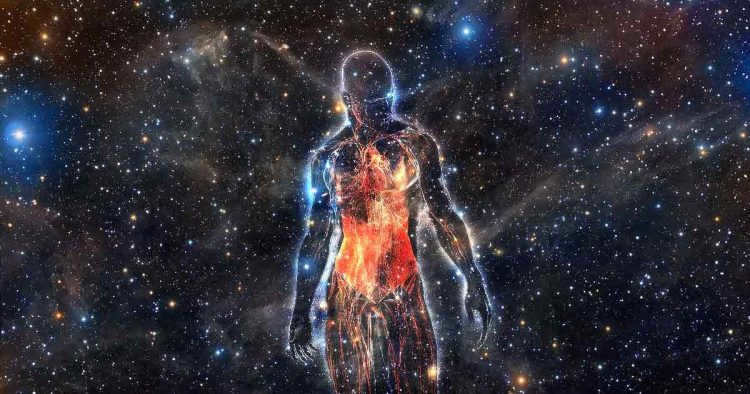
Your physical form, as well as the physical forms of all other entities in this vast universe, are comprised of celestial bodies, specifically deceased celestial bodies. Initially, the elemental composition was rather rudimentary, consisting primarily of hydrogen and helium. Subsequently, these elemental constituents merged together, giving rise to the formation of the very first stars. As these stars matured, they produced additional elements, including but not limited to iron and gold. Over time, these initial stars reached the end of their lifecycle, and their cataclysmic explosions resulted in the creation of new elements. Remarkably, our corporeal structures are constructed from a myriad of elements that exist within the universe. Naturally, the majority of these elements consist of hydrogen and oxygen; however, we also contain trace amounts of more extraordinary elements, such as gold!
8. When you gaze up at the heavens, you are actually peering into the past
The celestial bodies you behold are not mere stars, but rather the luminescent remnants of their emitted light from epochs long gone. Due to the finite speed at which light travels, we perceive it as it appeared in the yesteryears. A light year denotes the distance covered by light during a single revolution around the sun. Therefore, observing a star that resides 1,000 light years away enables us to witness its antiquated splendor from a millennium past.
7. The Enigma of the Fermi Paradox: The Existence of Alien Life
The fascination with alien life has captivated scientists, leading them to develop numerous innovative methods in their quest for extraterrestrial intelligence. One such notable endeavor is the SETI (Search for Extraterrestrial Intelligence) project, which employs a diverse array of techniques to scour space for signs of alien existence. These techniques encompass the search for space debris, examination of nearby stars, detection of man-made objects, analysis of radio waves, and scrutiny of radiation levels, all with the ultimate objective of expediting the discovery of intelligent life beyond Earth.

Given the immense expanse and age of the universe, it is highly likely that there are other planets similar to Earth. However, the Fermi paradox poses a contradiction to this notion, as the lack of visible evidence of extraterrestrial life contradicts the high probability. At this juncture, humans are uncertain about what is more unsettling: the possibility of being alone in the universe or the existence of other beings.
6. The universe contains a minimum of 10 billion trillion trillion stars.
While there is some disagreement among scientists, the most trustworthy estimate currently available is 10 billion trillion. Every star varies in size and can be hundreds of times smaller or larger than our Sun. Furthermore, each star is accompanied by celestial bodies such as planets, which can range from as few as 4 to as many as 12.
Indeed, there is the possibility that our universe is merely one of numerous other universes, each distinct from our own. Minor alterations in the fundamental laws of science could result in these alternate universes manifesting as something beyond our imagination. The crucial question revolves around whether the initial big bang that initiated our universe could have taken place in a different location. If this is the case, then the existence of innumerable other worlds becomes a plausible reality.
4. The Demise of Black Holes
Black holes exist in a range of dimensions that remain imperceptible to us. Their gravitational pull is so immense that even light cannot escape, serving as their sustenance.
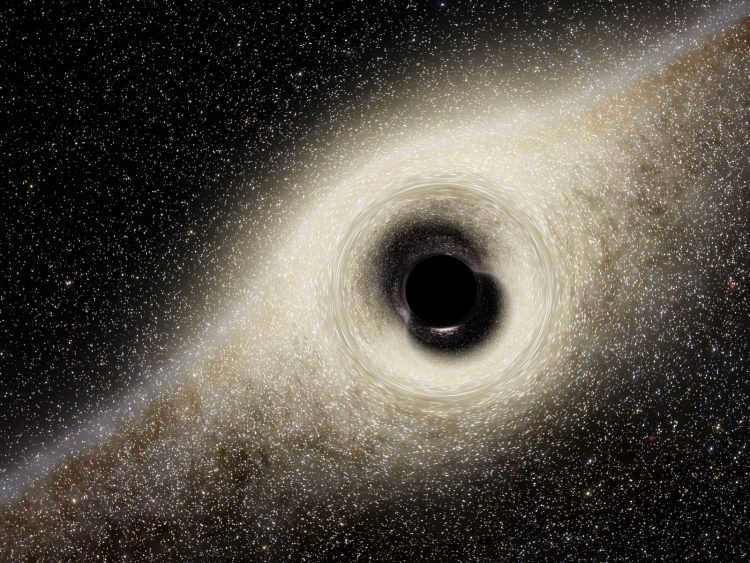
According to Stephen Hawking, black holes may eventually cease to exist if they go without sustenance for an extended period of time.
3. The universe is expanding
Before the 1920s, it was believed that the universe was stationary, but astronomer Edwin Hubble’s research revealed that it is actually undergoing expansion. For many years, it was mistakenly believed that gravity was causing the universe to slow down, when in reality, this would only be the case if gravity were stronger. Additionally, in 1998, the Hubble telescope observed that supernovae in the past were expanding at a slower rate than they are currently, further validating Hubble’s theory.
It is believed that the extent of our understanding and perception of the universe is limited to only 4%, while the remaining 96% is thought to be composed of undetectable dark matter and dark energy. These mysterious elements are said to exert a force that causes visible matter to separate, leading to the expansion of the universe and various other unexplored phenomena.
1. Our knowledge of the universe pales in comparison to that of our ancestors
Our ancestors possessed a depth of knowledge that often goes unrecognized in modern times. While they may not have constructed towering skyscrapers or sophisticated computers, they possessed a remarkable understanding of plants and herbs, geography, and astronomy. Consider the awe-inspiring structures such as Stonehenge, the pyramids of Giza, and the enigmatic Nazca Lines, which our forebears purportedly utilized for celestial observations. Recognizing the significant impact of celestial phenomena on their lives, our ancestors diligently conducted precise cosmological calculations. This invaluable knowledge guided them in determining optimal agricultural practices, venturing into perilous territories, forging alliances, and making crucial decisions.

